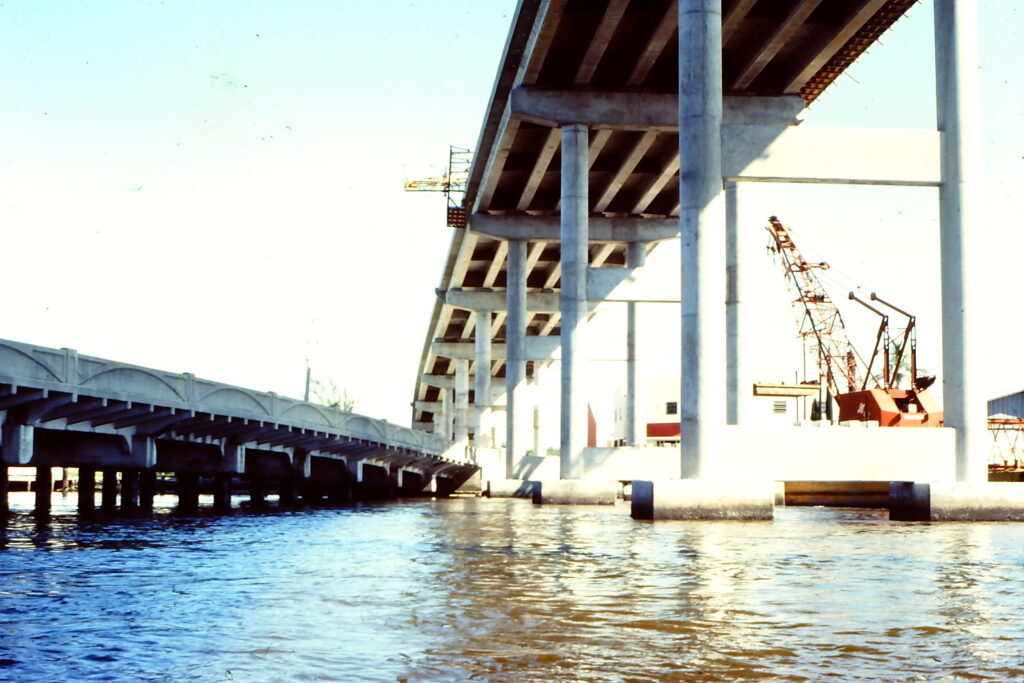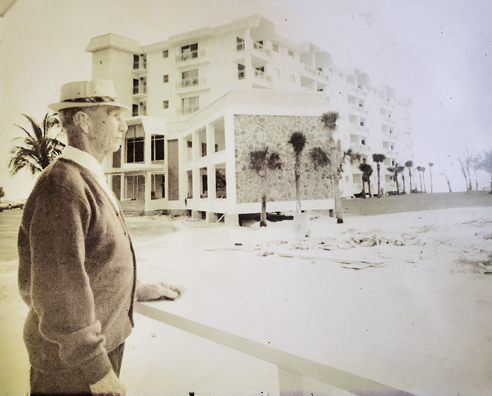FMB at a Crossroads

“Fort Myers Beach is at a crossroads. In two decades, it has gone from a sleepy fishing village where everybody knew everybody to a popular Gulf resort with all the problems rapid growth brings.” This quote was published in the News-Press in 1975. Now, fifty years later, we find ourselves in a similar situation as our rebuilding efforts continue. Perhaps it would be helpful to look back in time and learn from what happened in the past. Here is a brief history of how we got where we are today.

Prior to the 1970s, visitors to the island would stay at one of the mom and pop motels (Eventide, Rancho Del Mar, Island Motel), in one of the cottage courts (Pink Shell, Laughing Gull, Side o Sea) or a trailer court like Red Coconut.

From Trailer Courts to Condos
In 1965, a group of investors ran an ad in the News-Press proclaiming a new concept in island living. The ad stated, “Please don’t leave until you have made plans for your return visit to FMB. And your plans should include the pleasant living at the Privateer Cooperative Apartments. Come in today and see the models, the first of eight buildings to be constructed on the beach with direct views of the Gulf of Mexico. Enjoy the privileges of home ownership without the disadvantages. Starting at $14,750.”

Although cooperative apartments were popular in many northern cities, few FMB residents were familiar with the term. In fact, we didn’t even have any “apartments” on the island at the time. Due to financial issues, the eight buildings never materialized. In 1967, however, the Privateer started construction on three buildings that were now being advertised as condos.
At this same time, Leonardo Santini and Jim Newton realized that the island was becoming more and more popular as a winter vacation spot. When Newton informed Santini that thousands of people who wanted to visit were being turned away because most of the motels, cottage courts, and trailer parks had no vacancy, he was concerned and began looking for alternative lodging that could be offered to entice people to visit the island.

Newton, who had been researching condos in other places, convinced Santini to consider investing in such a development on the island to alleviate the room shortage. Thus, Leonardo Arms, the first “official” condo on the island was built. Newton’s real estate company took charge of sales and the first 192 units sold quickly at $20,000 to $30,000 each.
When I left for college in the early 70s, Leonardo Arms and the Privateer were the only condos on the island. When I returned a few years later, the condo spigot had been opened, and development was occurring in a fast and furious fashion. By the end of the 70s, thirty-nine condos had been constructed or were in the process of being constructed on the island. These included Island Winds, Island Reef, Bay Beach, Sandarac, and Estero Yacht and Racquet Club to name a few. By the end of the 80s, fifty-eight more condos or time shares had been constructed. Most of these were approved by the Lee County Commission with little or no concern for density, height, or infrastructure to support the increase in population.
A Town is Born
Development continued into the 1990s with Bermuda Dunes and Waterside coming onboard. This is the point when we started talking about decreasing density. During the 70s and 80s, the county allowed 30 units per acre to be developed (25 units per acre on the gulf side). Residents who were concerned about the over-development that was occurring pushed the county to reduce the density to 14 units per acre. As talks of incorporation started heating up, developers made plans to develop more high rise condos before the town changed the codes.
Talks of incorporating the island were not new. In fact, in forty-nine years, the incorporation issue had been voted on 7 times. In 1981 the vote was 2-1 against incorporating. By 1986, the tide was beginning to change as the vote to incorporate lost by only 126 votes. Finally, in 1995, the residents voted to incorporate so they could control their own destiny. The impetus for this vote was the county commission’s support of Diamondhead Resort, a proposed 16 story hotel and convention center to be built on Virginia Ave.

That was fifty years ago. That was after Hurricane Donna in 1960 and before Hurricane Charley in 2004. In those fifty years, there have been many different Council Members elected to lead our town. For the most part, until September 22, 2022, the status quo was acceptable. The number of high rise buildings decreased and it looked like the comp plan was working.
We now find ourselves in unchartered territory as we debate how we rebuild our island. Much like it was fifty years ago, residents remain divided on the best way to replace what we have lost. Some are concerned that without changes in the comp plan, developers will bail and large parcels of beach front property will become overgrown reminders of the destruction we have faced since Ian, slowing down the rebuilding efforts. Others are concerned that approving some of these changes to the plan will once again open the spigots for uncontrolled development much like what we experienced in the 70s and 80s.
As a history buff, I believe we should learn from our past. We faced uncontrolled development that was continuing unabated until residents took control and finally voted to incorporate so we could control our destiny. The evolution of FMB from a sleepy fishing village to a tourist destination has already occurred. We have a beautiful island that people will visit whether or not we have five-star hotels or four million dollar condos. We need to be patient, learn from the past, and carefully map our future by following the plan set forth when we took the plunge to become a town.
I will close with another quote from the News-Press back in the seventies: “Nobody wants to stop progress but there is an increasing awareness that the island is in danger of becoming a polluted paradise.”